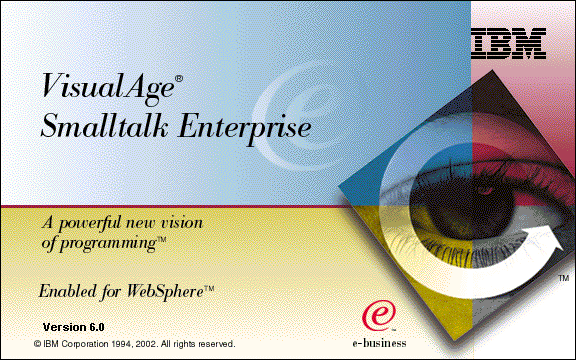
Updating software is important. We all know that better security, more features, and improved stability are generally a good thing. When software is neglected, high profile issues can occur that result in huge problems! Enterprise systems using IBM® VisualAge® Smalltalk are no exception, but we've seen some organizations leave these applications untouched and out-of-date for many years (or even decades).
We know that system downtime has real-world consequences and costs, so it's understandable why many IT professionals avoid making regular updates to these mission-critical applications. Unfortunately, when these updates are forgotten altogether, major problems can eventually occur. It's likely for this reason, as well as the "if it's not broken, don't fix it" mantra, that there are VisualAge Smalltalk systems still running today, with not only outdated VisualAge software, but also an unsupported operating system (OS) and aging hardware too.

Obviously, avoiding software updates isn't a viable long-term solution. While an old VisualAge system won't degrade or change over time (and Smalltalk applications tend to be really stable), the IT world is constantly changing. Old hardware will eventually need to be replaced and many outdated operating systems (like Windows® XP or Solaris®) are already unsupported. It's vital that application software, like VisualAge Smalltalk, keeps pace with these inevitable changes to continue to be viable.
While it's true that older software can usually be run on newer hardware and modern operating systems, this compatibility is not assured and security can remain an issue. If an application continues to run on an outdated OS and hardware, even isolated systems without direct internet connections can still pose security risks for an organization.
However, there's a easy path forward that will give you the opportunity to keep your Smalltalk system while reducing the chances of being affected by security and hardware issues.
There's no need to leave a familiar and reliable Smalltalk system behind. Since Instantiations took over development and support of the VisualAge product line with the release of VA Smalltalk 7.0 in 2005 (now known as the VAST Platform), we've continually accounted for these technical changes and have moved the VAST product beyond what the original VisualAge creators could have envisioned.
Hundreds of security enhancements, performance improvements, fixes, and new features have been added to VAST since IBM entrusted the rights of VisualAge Smalltalk to Instantiations. And unlike the original VisualAge releases, every build of VAST goes through comprehensive automated testing (as well as traditional manual tests) to maximize stability and prevent the majority of code issues that VAST users could encounter.
Today, the VAST Platform is an up-to-date Smalltalk environment suited for modern development needs with many noteworthy updates since VisualAge, for example:
According to our recent survey results, the majority of Instantiations customers are actively developing their applications while using the latest releases of the VAST Platform.
It's evident to these customers that VAST isn't stuck in "maintenance mode" and a VisualAge application upgraded to VAST doesn't have to be stuck either. Instantiations continues to invest in the VAST Platform, and for more than 15 years we've been supporting our customers, many of whom are former VisualAge users. VAST creates new opportunities for Smalltalk developers and the companies who can continue to move forward with their Smalltalk-based systems.
The transition from VisualAge to VAST is easy in most cases, so it's a great option to modernize your VisualAge application.
VisualAge Smalltalk images as old as version 3 can work on the current VAST Platform virtual machines, and the migration itself is a very straightforward process using our migration guide. Instantiations updates this guide for every release of the VAST Platform (VA Smalltalk) to ensure there's a documented process to migrate your VisualAge code efficiently.
While migrating VisualAge to a completely different technology stack is possible, it is usually a multi-year effort. Additionally, a project of this length carries significant risk and cost, and these costs can add up to millions of dollars over time. This kind of project just isn't worth it in many cases.
Alternatively, when migrating from VisualAge to VAST, the timeline is almost always measured in days, weeks, or months, not years. Most internal development teams are able to complete the migration themselves also.
Unlike VisualAge, the VAST Platform is a fully supported enterprise software. When your internal development team hits a roadblock, Instantiations' support engineers can be called on for help. They are the same engineers that develop the VAST Platform itself, so there's no outsourced support to an unqualified 3rd party service.
This means that VAST Platform customers get expert-level support immediately without waiting for elevation from a lower support tier. In truth, when you upgrade to VAST, you're not just purchasing software, you're purchasing access to Instantiations' engineering team.
Instantiations offers two different support plans for VAST customers to satisfy their diverse needs. Learn more.
Instantiations is fortunate to be part of the Smalltalk community, and more specifically a very active VAST Platform (VA Smalltalk) community.
There's continuing involvement and discussion on the VAST Community Forum, VAST Community Hub, and Instantiations' GitHub that have led to great ideas, creative fixes, and open source collaboration.
Instantiations offers reduced upgrade pricing to help ease the transition of VisualAge customers to the VAST Platform. Additionally, Instantiations is available to provide guidance, support, and even development/consulting services to assist with any VisualAge to VAST Platform migrations.
Learn more about the benefits of migrating from our VisualAge to VAST overview, or contact us to get started.